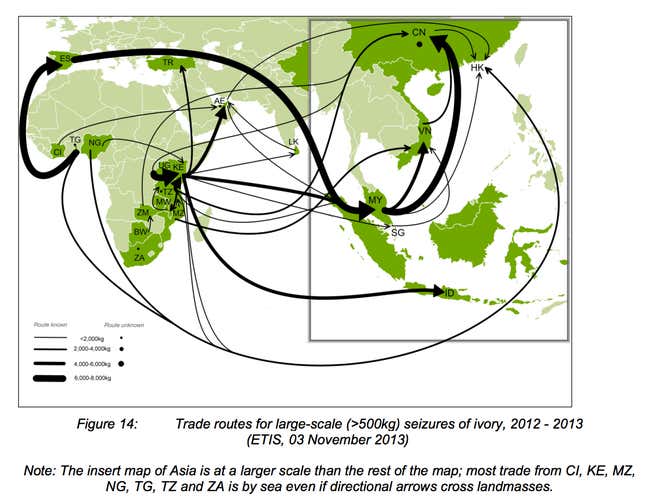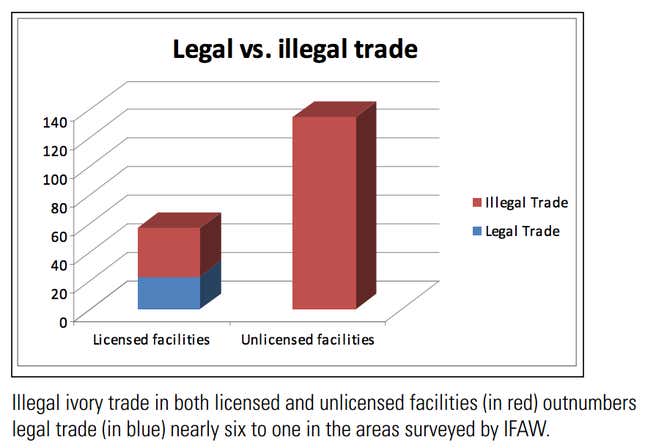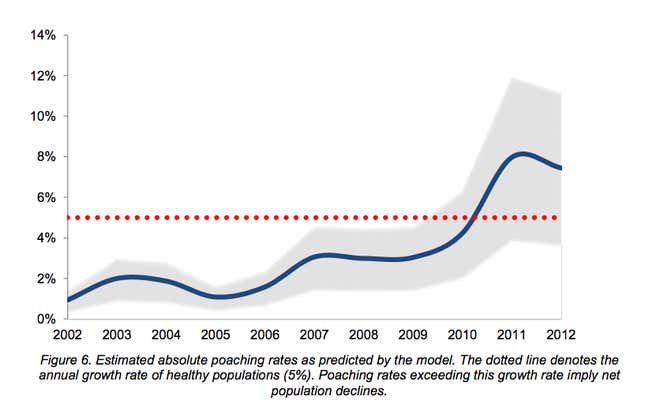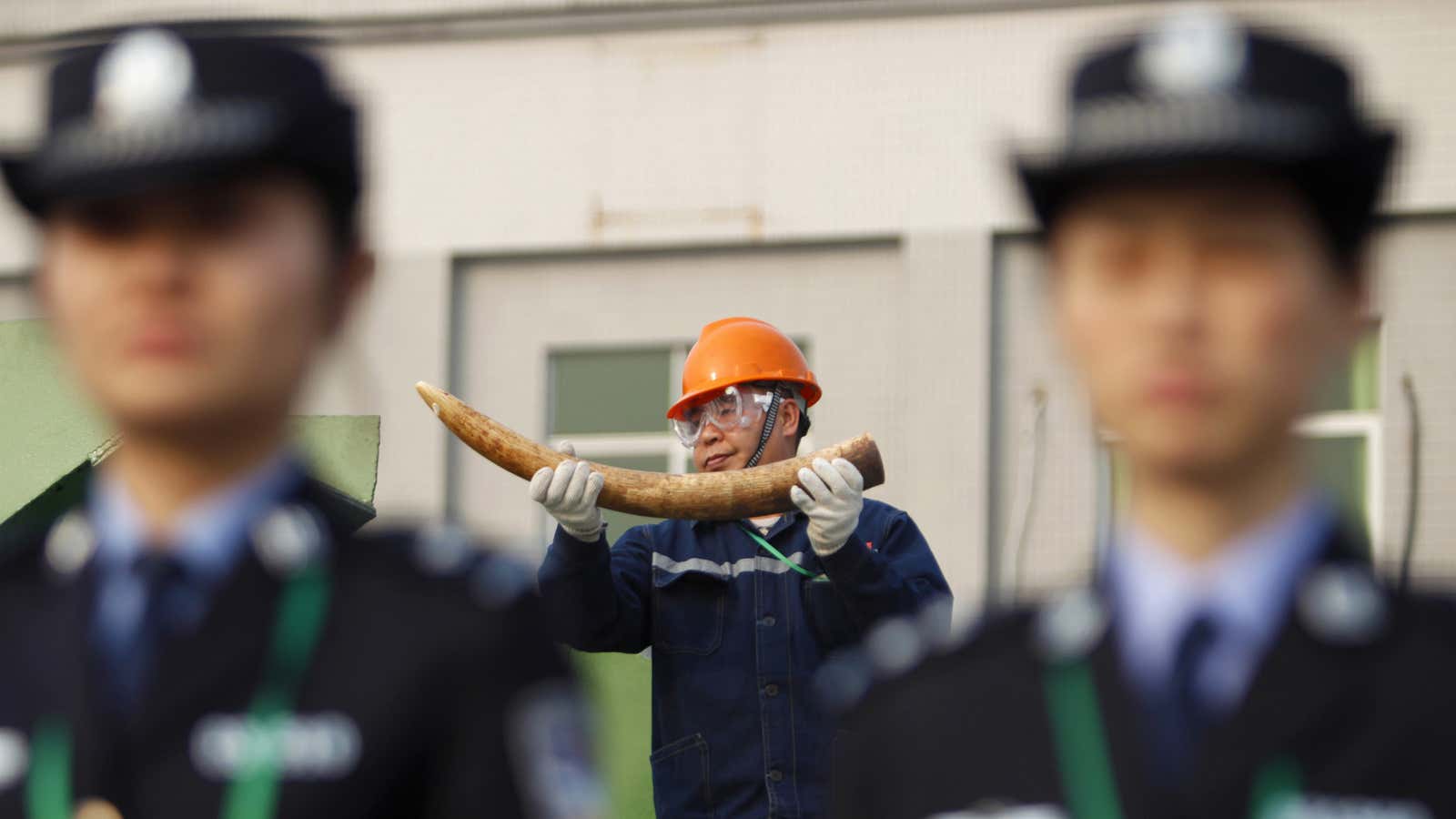China’s the latest to embrace the ivory-crushing trend. Following the leads of countries like Kenya, the US, the Philippines and Gabon, China rounded up 6.2 tonnes (6.8 tons) of ivory today and pulverized it. That was supposed to “demonstrate the country’s determination to discourage illegal ivory trade, protect wildlife and raise public awareness,” as a government official put it.
International groups are hailing today’s ivory-crushing as a big step for China. Most of the world’s $7-10 billion in illegal ivory harvested each year is thought to flow to China, where it is whittled into carvings considered to be luxury items among China’s professional class (link in Chinese). To meet this demand, poachers kill at least 22,000 elephants a year and supports militant guerrilla groups like al-Shabab and the Lord’s Resistance Army
But there is one massive reason to doubt this will save the lives of many elephants: It’s perfectly legal to buy and sell ivory items in China—and a lot of “illegal” ivory flows into that trade.

What ivory does China deem “legal”? The 62 tonnes that international authorities allowed China to buy in a one-off sale in 2008, as well as ivory bought before China signed the international ban on the trade in 1989. (The 6.2 tonnes destroyed today was confiscated from smugglers.)
The government says it releases 5.5 tonnes of ivory a year (pdf, p.10) onto the market, according to the International Fund for Animal Welfare (IFAW). It licenses dozens of carving factories and more than 100 ivory retailers to sell ivory knick-knacks that the government says are rendered only from “legal” ivory.
This shortage of supply is part of why ivory prices are rising around 50% a year (paywall), as the South China Morning Post reports. It’s also why the licensed facilities often use their legal status to sell smuggled ivory.
“[C]ompared with the astronomical price of ivory in China… the price one pays to buy ivory in Africa is so much cheaper,” Grace Ge Gabriel, Asia regional director for IFAW, told the SCMP. ”If one smuggles ivory into China and sells it under the cover of the legal market, the profit margin could be very high.”

The existence of the “legal” trade means consumers think buying ivory doesn’t harm elephants, adds Gabriel. So by destroying the confiscated ivory, China has at least taken a first step in raising public awareness about the illegal trade. But as long as it’s fine for Chinese consumers to keep buying “legal” ivory, elephants will keep being killed faster than they can reproduce—regardless of how many “illegal” tusks the government crushes.

